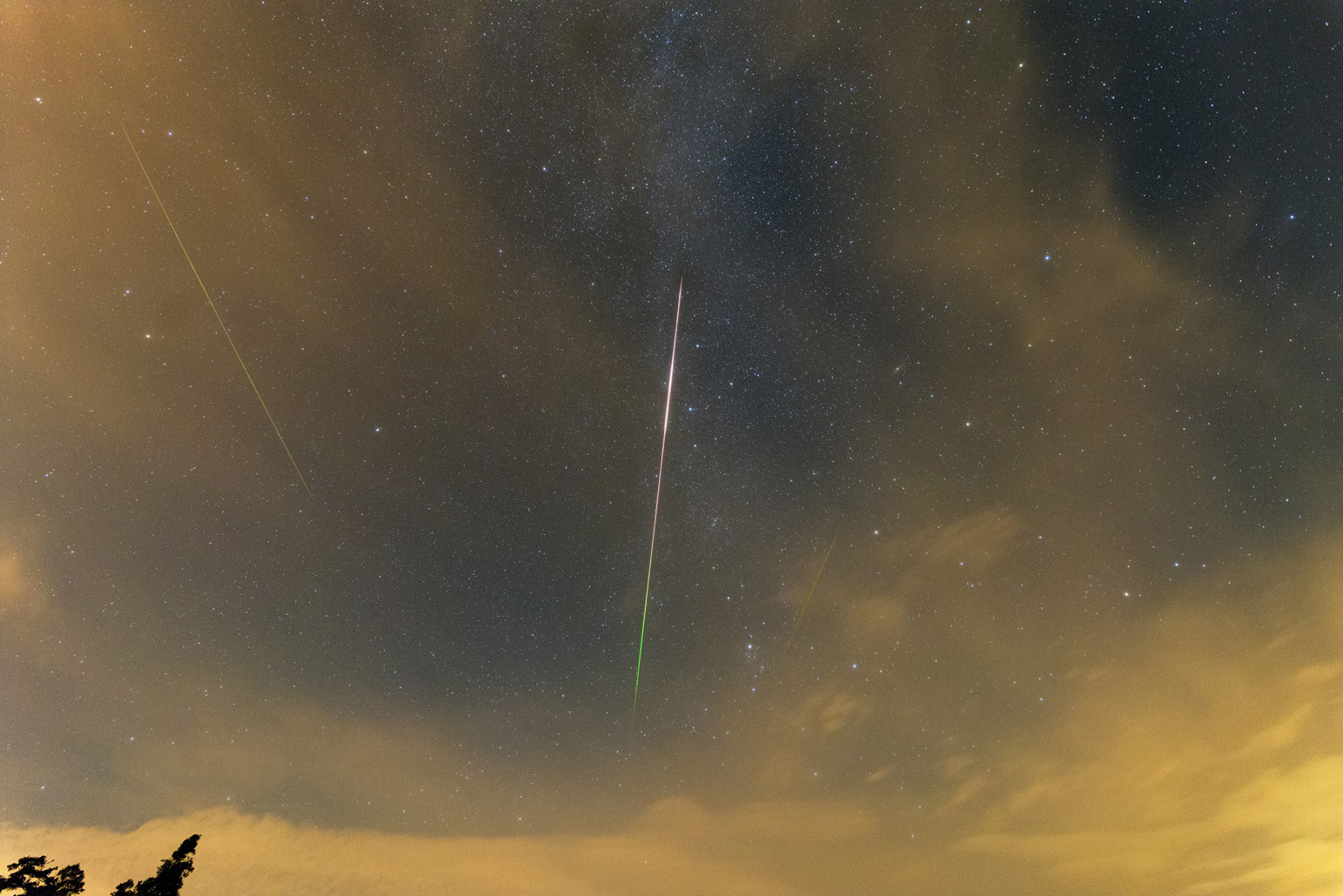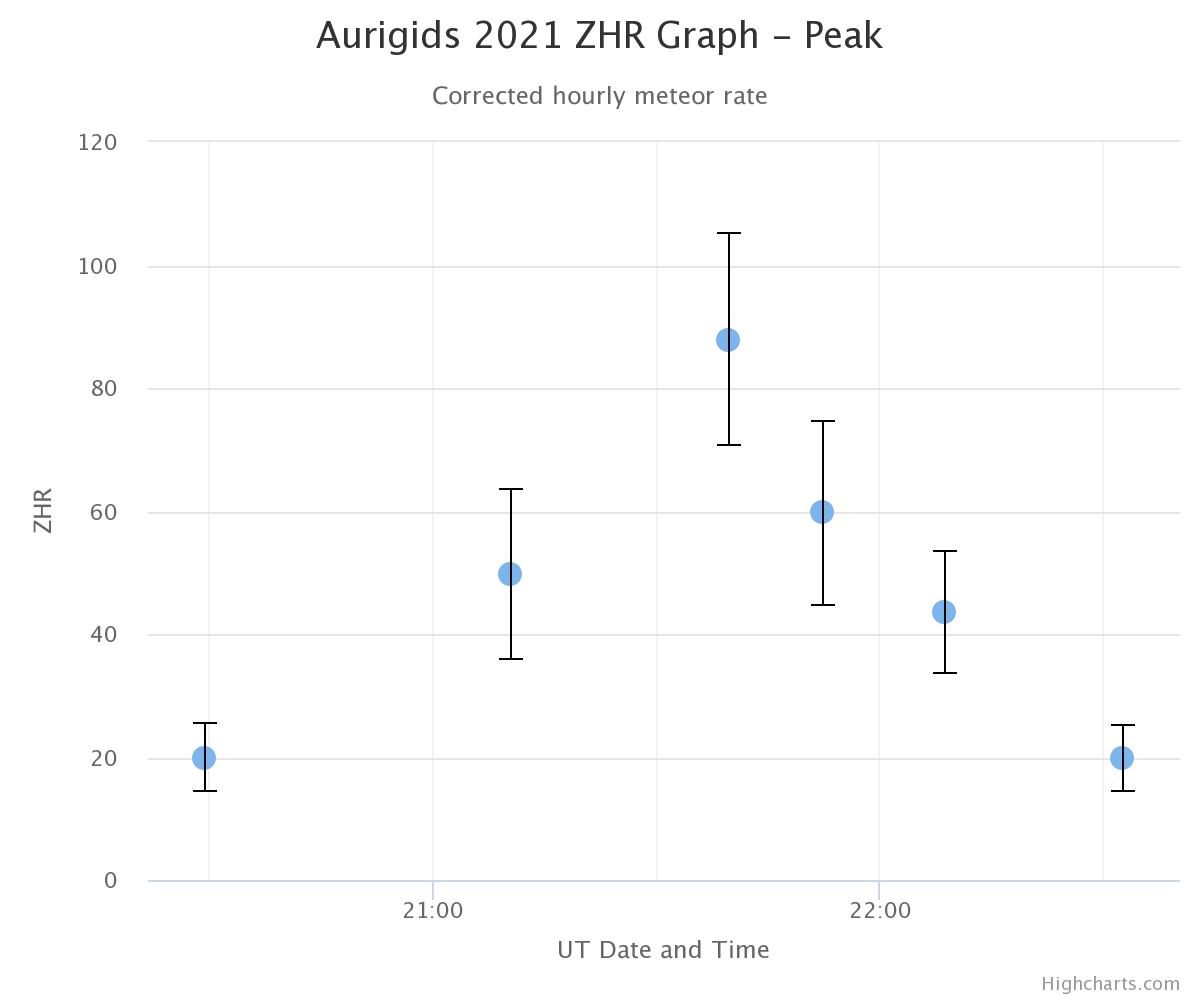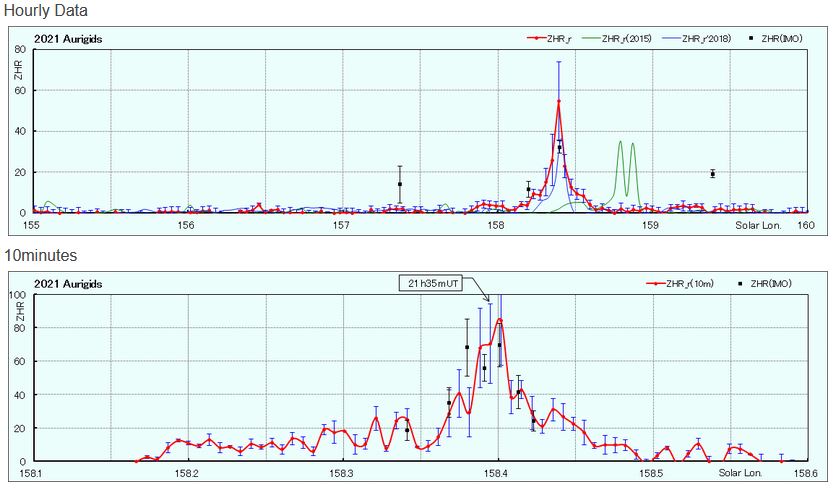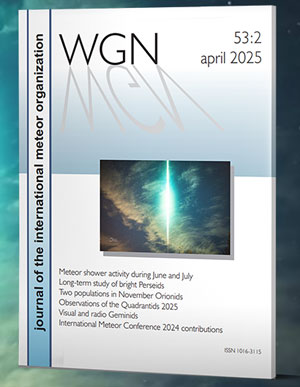 Miloslav Macháček photographed three bright and long Aurigid meteors from Býšť, Czechia, through high-altitude clouds (in the best window with relatively low amount of clouds). First one (right) at 23:25 CEST (21:25 UT). Second (left) and third (middle) meteors were shot both just about 15-20 s apart at 23:42 CEST (21:42 UT) – the third one was beautiful minus magnitude and long fireball. © Miloslav Macháček
Miloslav Macháček photographed three bright and long Aurigid meteors from Býšť, Czechia, through high-altitude clouds (in the best window with relatively low amount of clouds). First one (right) at 23:25 CEST (21:25 UT). Second (left) and third (middle) meteors were shot both just about 15-20 s apart at 23:42 CEST (21:42 UT) – the third one was beautiful minus magnitude and long fireball. © Miloslav MacháčekA flurry of Aurigid meteors appeared near the predicted time of 21:35 Universal Time on the night of 31 August-1 September. Preliminary results received by the IMO indicates a peak centered at 21:40 UT with abnormal activity occurring for two hours centered on this time. Actual raw numbers of meteors were reduced by the low altitude of the radiant as seen from Europe, where all of the early results are based. Many observers also suffered from interfering clouds and a reduced limiting magnitude which further reduced the number of meteors visible. Most of the observed activity was bright with many observers mentioning several negative magnitude meteors. It’s too early to mention a peak zenith hourly rate as more data is necessary to provide an accurate figure. Having witnessed two of these Aurigid outbursts myself, it is indeed exciting witness such a spectacle, even if it pales in comparison to the Leonid storms of twenty years ago.

Outburst also clearly materializes on radio echoes profiles as a sharp peak centered on solar longitude 158.4° (which equals 21h 35min UT), as seen on data issued by the International Project for Radio Meteor Observations (IPRMO).





 You saw something bright and fast? Like a huge shooting star? Report it: it may be a fireball.
You saw something bright and fast? Like a huge shooting star? Report it: it may be a fireball.  You counted meteors last night? Share your results with us!
You counted meteors last night? Share your results with us!  You took a photo of a meteor or fireball? You have a screenshot of your cam? Share it with us!
You took a photo of a meteor or fireball? You have a screenshot of your cam? Share it with us!  You caught a meteor or fireball on video? Share your video with us!
You caught a meteor or fireball on video? Share your video with us!
2 comments
Just finishing the first review of the morning of August 31 see what are clearly Aurigids but seems there is activity coming out of Perseus . Is this activity the Aurigids,or what once was called the Delta Aurigids or is this early members of the September Perseids which officially do not start until around September 5?
Thomas and All,
If the activity was coming from the area near Algol, then it could be early September Perseids. If they came from the other (eastern) side of Perseus, then you witnessed something unexpected. They are definitely not delta Aurigids as those meteors are only active for a week in mid-October.